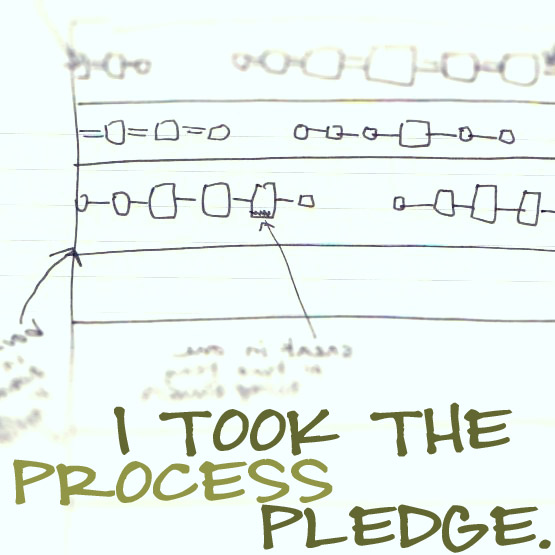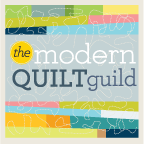" If you can make Half Square Triangles, you have mastered 95% of quilt patterns."
Brenda Brayfield, quilting teacher extraordinaire
Simple blocks like Pinwheel and Card Trick, sawtooth borders, complex blocks like Crown of Thorns or Bear's Paw; all are built on that rock-solid chassis of quilting, the Half Square Triangle (HST).
 |
| http://sewmamasew.com/blog2/2010/04/simple-triangle-block-sew-along/ |
HST's are single handedly responsible for the oft repeated sentiment amongst non-quilters that quilting is just too danged fussy and all quilters are joyless perfectionists. While it is true that HST blocks do not look their best when inaccurate, I would like to rephrase the above criticism and say "there are few sights as pleasing as a quilt constructed with clean, sharp points; the effort required is well worth the heartache involved!".
The illustration below details the traditional method of HST construction, where two squares are layered together, sewn with a double seam on the diagonal and cut apart. This is generally the first method you will be taught in any Quilting 101 course:
 | ||
| http://www.popularpatchwork.com/news/article.asp?a=6842 |
Not only is the traditional method demanding in terms of accuracy, it is S--L--O--W. Slow as treacly molasses! Many quilting projects made with blocks constructed using HST units demand the production of scores of HST units, ditto for patterns using sawtooth borders, so it was with some determination that I went in search of a method of HST production that was not only easier to get right, but faster to get finished.
Mercifully, there are many other ways to make HST's!
The first method I turned to was the "no waste" method. I was not particularly motivated by low or no waste...after having to discard several blocks worth of work and materials thanks to accuracy issues, I realized that the lowest waste is generated by the most reliable route to accuracy! Below is a quick illustration of the classic no waste method:
 | ||
| http://learn2quiltonline.blogspot.com/2011/01/how-to-make-lots-of-half-square.html |
You simply put two squares right sides together, sew around the edges with an accurate 1/4" seam, and cut the sewn shape apart on the diagonals. Voilà, you now have four Half Square Triangle units! The major drawback here is that you are left with a lot of exposed bias edges. Not too big a problem if, like me, you wash, dry and starch your raw goods. A good starching gets you through a lot of bias issues! The major advantage of this method is that you get four HST's at a time (note: 4 HST's = 1 pinwheel). Faster, but still not fast enough.
There are plenty of HST rulers out there...essentially you sew strips of fabric right sides together, and cut them into triangles, which unfold along the sewn line into half square triangles. I tried a few of these clever rulers, but they were not much more accurate than the traditional method, and a bit tricky to cut out with the rotary cutter. And while faster than the traditional method, the ruler method was still too slow for my purposes:
 |
| http://carole-quiltingadventures.blogspot.com/2011/02/mass-production-half-square-triangles.html |
**For all of the above methods, I found it was best to admit that I was going to have accuracy problems, and to make the HST's slightly over size, then cut them down to the required size and accuracy:
 |
| http://www.frugalquilting.com/triangle_half_square.htm |
Finally, I was pointed toward Half Square Triangle papers. You can get these through a variety of sources...there are free downloads on the web and there are commercial products, ie. Thangles. Both are great methods, very quick and very, very accurate!
But in the end, my own addiction to HST projects, particularly the construction of pinwheel blocks, of which I am inordinately fond, led me to the Triangulations CD . At last I could easily print off triangle paper (I use copy paper quite successfully) of any required size, and end up with loads of HST units sewn with maximum efficiency and truly impressive accuracy.
This was the answer I had been searching for! My approach now is to sew up sheets of the Triangulations sheets in whatever size is required, pop them into a work bag with a pair of scissors, and then when I need to keep my hands busy ie. watching tv, on the bus etc., I take out a sheet, cut along the lines, remove the paper from the HST's, and put them aside for pressing.
When assembling HST projects, I like to keep my seam lines aligned, and work carefully to ensure my points come out neat and sharp. To do this, I press seams open, and pin carefully with fine pins on either side of where seams join. This prevents the seams from shifting apart during sewing. And I am very careful to sew with a very accurate 1/4" seam. You can also watch your seam lines as you sew the points together to make sure you sew right across, but not above or below, the point itself. And I am not afraid to rip out when a point is either buried or left floating.
(the one exception to this approach is when I am making deliberately wonky, folk art type blocks or units, à la the Collaborative/Liberated Quilting method I learned from Freddie Moran and Gwen Marston. That method demands you pay attention to balance and design rather than perfect accuracy)
Here is a shot of one of my "made it by accident" blocks, one I ended up liking very much and used in a nice little lap quilt I have under construction. HST's look fabulous in black and white prints...give it a try in your next project!













2 comments:
I too am faced with a trying to make by accident glad to see I am not the only one
Or to put things another way, the most fun you can have in quilting is just trying out new things...new colours, new designs, new skills. There are going to be "learning events" on that journey; they are a sign that you are growing!
Post a Comment